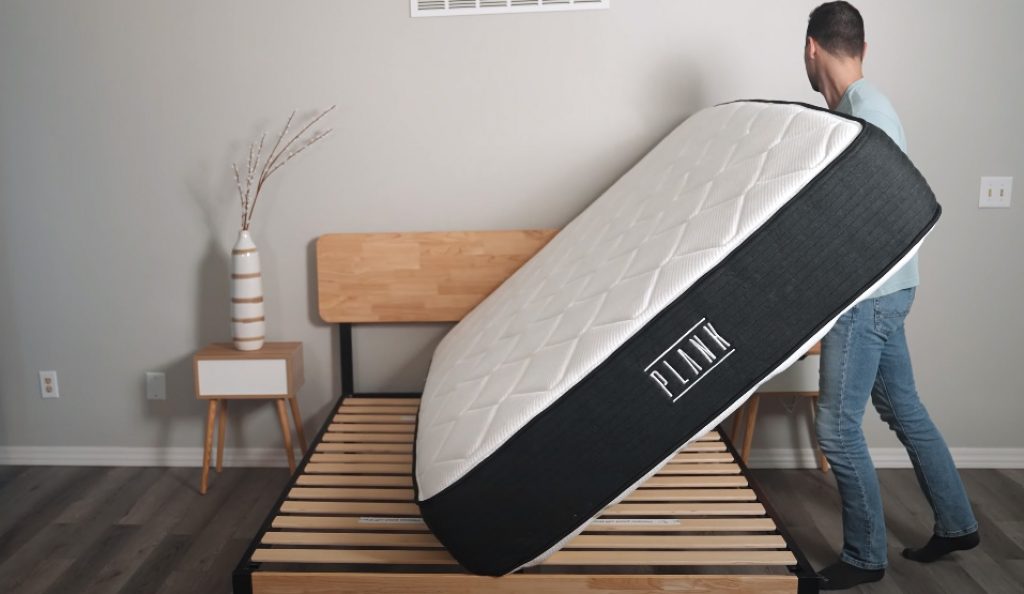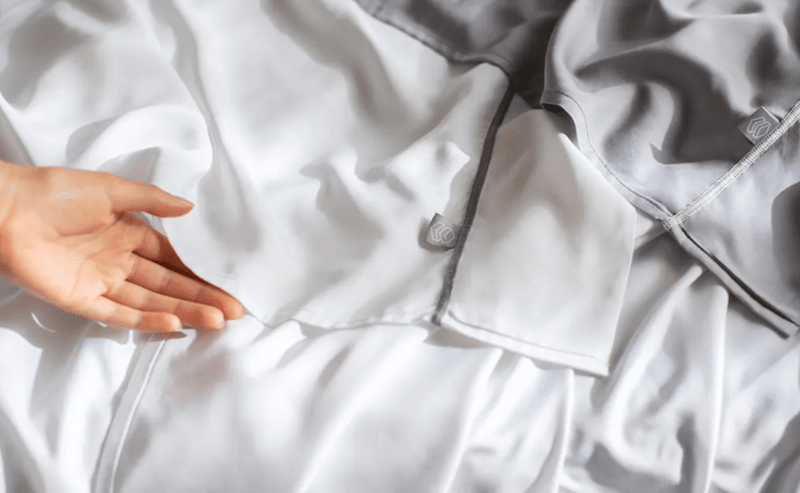8 Ways to Protect Your Mattress
The average person spends anywhere from 7 to 11 hours in bed[1] every day. With all this use, your mattress is going to suffer from some wear and tear. However, if you take good care of your mattress, it will take good care of you. Using these tips should ensure that you get the most out of your bed.
Always Use a Mattress Protector
The first and easiest way to defend your bed is to use a mattress protector. A mattress protector provides a physical barrier against dust, dirt, skin cells, sweat, and pet dander. If you select a waterproof protector, your mattress should also be safe from spills and stains that could damage the bed, as well as urine from bedwetting if you have young children.
You spend a lot of your life on your bed, and life is messy. Therefore, having this extra layer can keep your mattress fresh and clean.
The good news is that there are plenty of well-made mattress protectors available so that you aren’t just wrapping your bed in uncomfortable plastic. With a high-quality protector, you’ll sleep comfortably knowing that your mattress is safe from external soiling.
Rotate Your Mattress Occasionally
Sleeping on your mattress in the same place for years puts uneven pressure on those parts of the bed. You can extend the life of your mattress by rotating it every few months. Rotating a mattress will change where your heaviest pressure points, like your hips and shoulders, press into the bed.
By slightly altering the mattress position, you can prevent mattress sagging and dipping from repeated weight in one place. If your bed is dual-sided, you could also flip your mattress from time to time. However, many dual-sided beds have two different firmness levels, so make sure you can rest comfortably on the opposite side too.

Learn More: How Often You Should Rotate Your Mattress
Explore: Best Mattresses That Don’t Sag
Keep the Pets Away
If you’re a pet owner, you may want to let your fur babies up on the bed with you. However, keep in mind that dogs and cats add an extra layer of dirt and dander that can prematurely age your mattress. So if your pets get up on the bed, here are a few more steps to protect your mattress.
A mattress protector can help with pet messes the same way it would protect against other damaging elements. You should also wash your bedding often and even consider giving your pets their own blanket or cushion to lie on when they are on the bed.
Pets are more likely to have accidents that they can’t control, so putting up these extra barriers can save your mattress from unwanted stains and odors.
Make Sure Your Mattress Has the Right Support
One of the most significant factors that can affect your mattress is not using the proper foundation. Your bed needs support from either a box spring or a bed frame to adequately sustain you and your weight. Various types of mattresses require different foundations, so make sure that you’re using the right one. If you’re unsure, you can check with the manufacturer to ask about the proper foundation.
Using a bed frame or box springs will keep your mattress off the floor, further protecting it from dirt and dust. Furthermore, the proper foundation will keep your mattress from sagging and dipping.
View Our Guide: Best Bed Frames
Wash Your Bed Sheets Every Week
As humans, we’re a little bit gross—we get sweaty, eat in bed, and shed hair and skin cells. All this debris can then gather in the bedsheets. Taking the time to wash your bed sheets each week keeps these messes from seeping into the mattress. Plus, the longer you go between washes, the more dust, skin cells, and grime have a chance to cling to your mattress.
If you are using a mattress protector, this will also need to be washed from time to time. The recommended timeline for protectors is once every two months.

Follow Manufacturer’s Instructions for Cleaning
Just as you wash your sheets and protector, you should also clean your mattress periodically. Mattresses should be cleaned at least twice a year, but you can choose to clean more often too. As with other bedding materials, though, you’ll need to follow the recommended mattress cleaning method.
You can vacuum and spot clean most mattresses. Vacuuming removes dust and debris, while spot-treating can fix stains or accidents. However, avoid using strong chemicals on your bed, as they could eat away at the materials.
Learn More: How to Clean Your Mattress
Beware of Bedbugs
Once bedbugs have made your mattress their home, saving it can quickly become an impossible task. If you stay in a hotel or Airbnb, always check the bed before settling in and avoid leaving your luggage on the floor.
You may also want to take extra precautions if you live in an apartment, as these critters can spread more easily in densely populated areas. For example, you could invest in a bedbug-proof mattress protector. Unlike a regular cover, these kinds of protectors have specially designed zippers that keep bed bugs out.
Frequently washing your linens can also help cut down on bedbug risk.
Learn More: Home Remedies to Get Rid of Bed Bugs and Bed Bug Statistics
Let the Sunlight In
A little sunshine can do wonders for your mattress. Now and then, perhaps when rotating or cleaning your bed, open up the windows and let the sun dry out your mattress. Letting the bed bake a little in the sunlight can rid it of retained moisture while airing it out and freshening it up.
Frequently Asked Questions
How often should you replace your mattress?
Every mattress is different, and no bed has an official expiration date from the day you purchase it. Depending on several factors, from the type of mattress you have to how much you use it, you can typically get anywhere from 6 to 10 years out of it. Innerspring mattresses will usually give out before memory foam mattresses do, and latex mattresses can often outlast them both.
Taking the above precautions should make your bed last longer, but eventually, every mattress needs replacing. So when you start to notice sagging or your bed becomes uncomfortable, it might be time to go shopping.
Read More: When Should You Replace Your Mattress?
Conclusion
The investment in your mattress goes beyond that initial purchase.
Get a mattress protector, regularly clean your sheets and your bed, and don’t forget to let the sunshine in to refresh your mattress. Taking the time to incorporate these protective and preventive measures into your routine will ensure that your mattress lasts as long as it can.
Still looking for the perfect bed? Explore the best mattresses tested by Sleep Advisor.

Jill Zwarensteyn
Editor
About Author
Jill Zwarensteyn is the Editor for Sleep Advisor and a Certified Sleep Science Coach. She is enthusiastic about providing helpful and engaging information on all things sleep and wellness.
Combination Sleeper
Sources and References:
- [1] “We spend nearly half of our lifetime lying around in bed”, New York Post, March 21, 2019